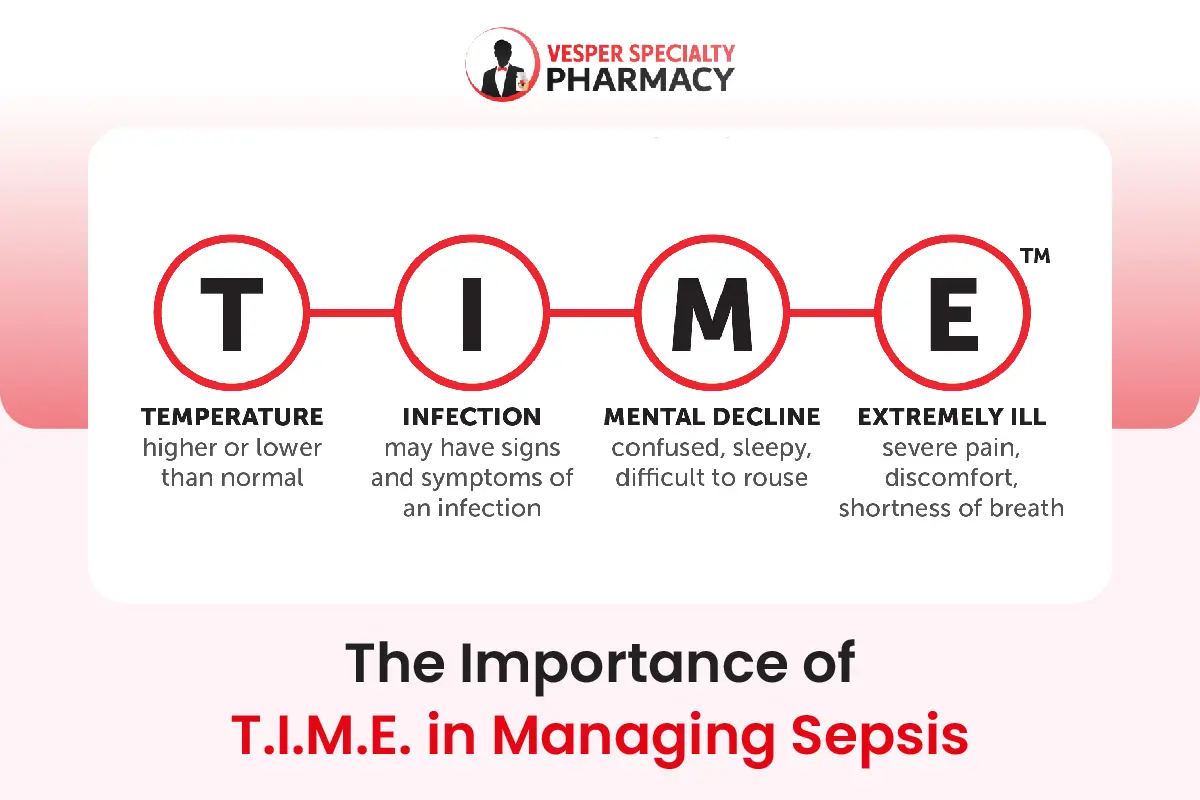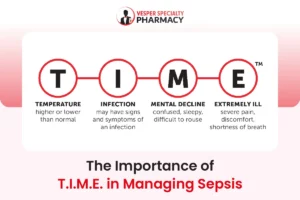Pertussis, commonly known as whooping cough, is a highly contagious respiratory infection caused by the bacterium Bordetella pertussis.
It is characterized by severe coughing fits, often accompanied by a distinctive “whooping” sound when the person tries to inhale after coughing.
Pertussis is a significant public health concern globally due to its potential severity and impact on vulnerable populations, particularly infants and young children.
Table of Contents
Historical Significance and Prevalence
The history of pertussis stretches back centuries, with documented outbreaks dating as far back as the 16th century. Before the development of vaccines, pertussis was a major cause of childhood mortality worldwide.
Even today, despite advancements in healthcare and widespread vaccination programs, pertussis continues to pose a significant threat, particularly in areas with low vaccination rates or where immunity has waned over time.
Importance of Awareness and Prevention
Awareness of pertussis and its potential consequences is crucial for both individuals and communities. Understanding the symptoms and transmission of the disease can help individuals recognize and seek timely medical care, reducing the risk of severe complications and the spread of infection to others.
Additionally, promoting vaccination and maintaining high immunization rates within populations are essential strategies for preventing outbreaks and protecting those most vulnerable to pertussis, such as infants who are too young to be fully vaccinated.
What is Pertussis?
Pertussis, also known as whooping cough, is a highly contagious respiratory infection caused by the bacterium Bordetella pertussis. This bacterial infection primarily affects the respiratory tract, leading to severe coughing fits that can be debilitating and sometimes life-threatening, especially in young children and infants.
Define Pertussis in Detail
Pertussis is characterized by paroxysmal coughing, meaning sudden and uncontrollable bouts of coughing that can last for weeks. The coughing fits are often followed by a sharp intake of breath, resulting in the characteristic “whooping” sound that gives the disease its name.
However, not everyone with pertussis will experience the whooping sound, especially in older children and adults.
The infection typically progresses through three stages
Catarrhal Stage
This initial stage resembles a common cold, with symptoms such as a runny nose, sneezing, low-grade fever, and a mild cough. During this stage, which lasts one to two weeks, the infection is highly contagious.
Paroxysmal Stage
In this stage, the characteristic coughing fits become more frequent and severe. The coughing spells can be so intense that they cause vomiting, exhaustion, and difficulty breathing. This stage can last for several weeks to months.
Convalescent Stage
The final stage involves a gradual improvement in symptoms, with the cough becoming less frequent and less severe. However, coughing may persist for several weeks or even months, especially in young children.
Signs and Symptoms of Pertussis
Pertussis, commonly known as whooping cough, presents with a range of symptoms that can vary in severity from person to person. The signs and symptoms of pertussis typically progress through several stages, with each stage characterized by distinct features.
Catarrhal Stage
- Runny or stuffy nose
- Sneezing
- Low-grade fever
- Mild, occasional cough
Paroxysmal Stage
- Severe, uncontrollable coughing fits
- Rapid coughing spells, often followed by a sharp intake of breath (the characteristic “whooping” sound)
- Vomiting or exhaustion after coughing fits
- Difficulty breathing or turning blue (cyanosis), especially in infants
- Intermittent coughing that can last for weeks to months
Convalescent Stage
- Gradual improvement in symptoms
- Cough becomes less frequent and less severe
- Lingering cough that may persist for several weeks or months, especially in young children
Causative Agent (Bordetella pertussis)
Bordetella pertussis is the bacterium responsible for causing pertussis. It is a small, aerobic, gram-negative coccobacillus that primarily infects the ciliated respiratory epithelial cells in the upper respiratory tract. The bacterium produces toxins that damage the respiratory epithelium, leading to the characteristic symptoms of pertussis.
How Whooping Cough (Pertussis) Spreads
Pertussis is highly contagious and spreads primarily through respiratory droplets when an infected person coughs or sneezes. The bacteria can survive in respiratory secretions or on surfaces for several hours, allowing for easy transmission from person to person.
Additionally, individuals with pertussis are most contagious during the early stages of the illness when symptoms resemble those of a common cold, making it challenging to identify and contain the spread of the infection.
Furthermore, pertussis can affect people of all ages, but it is particularly severe in infants who have not yet completed their primary vaccination series. Infants are at higher risk of complications such as pneumonia, seizures, and even death.
Therefore, preventing the spread of pertussis through vaccination, good respiratory hygiene practices, and timely diagnosis and treatment are essential for protecting vulnerable populations and controlling outbreaks.
Highlighting the Characteristic “Whooping” Sound
One of the hallmark features of pertussis is the characteristic “whooping” sound that occurs when an infected person attempts to inhale after a bout of coughing.
This sound is caused by the rapid intake of air through narrowed airways following a prolonged coughing spell. However, it’s important to note that not everyone with pertussis will produce the whooping sound, particularly in older children and adults.
The whooping sound is most commonly observed in infants and young children, whose airways are narrower and more susceptible to obstruction during coughing fits. While the whooping sound is distinctive, its absence does not rule out the possibility of pertussis.
Therefore, healthcare providers rely on a combination of clinical symptoms, laboratory tests, and medical history to diagnose pertussis accurately.
Diagnosing Pertussis
Pertussis, also known as whooping cough, can be challenging to diagnose based solely on clinical symptoms due to its similarity to other respiratory infections, particularly in the early stages. However, healthcare providers use a combination of clinical evaluation, medical history, and laboratory tests to diagnose pertussis accurately.
Clinical Evaluation
Healthcare providers will conduct a thorough physical examination and inquire about the patient’s medical history, including recent exposure to individuals with pertussis or characteristic symptoms of the disease. They will also assess the presence and progression of symptoms, paying close attention to the pattern of coughing fits.
Laboratory Tests
Laboratory tests, such as polymerase chain reaction (PCR) testing and bacterial culture, can help confirm the diagnosis of pertussis by detecting the presence of Bordetella pertussis bacteria or their genetic material in respiratory secretions (e.g., nasopharyngeal swab or sputum sample).
These tests are most accurate when performed during the early stages of infection, preferably within the first few weeks of symptom onset.
Treatment Options for Pertussis
While pertussis is primarily managed through supportive care to alleviate symptoms and prevent complications, early treatment with antibiotics can help reduce the severity and duration of illness, as well as decrease the risk of transmission to others.
Antibiotics
The primary treatment for pertussis involves the administration of antibiotics, typically macrolides such as azithromycin, clarithromycin, or erythromycin.
These antibiotics can help shorten the duration of symptoms and reduce the risk of transmission when initiated early in the course of the illness.
Antibiotic treatment is most effective when started during the catarrhal or early paroxysmal stage of infection.
Supportive Care
In addition to antibiotics, supportive care measures may be recommended to manage symptoms and promote recovery.
This may include staying hydrated, getting plenty of rest, using a humidifier to ease coughing, and avoiding irritants such as smoke or strong odors that can trigger coughing fits.
Over-the-counter cough suppressants are generally not recommended, especially in young children, as they can interfere with the clearance of mucus from the airways.
Importance of Early Diagnosis and Treatment
Early diagnosis and treatment of pertussis are essential for several reasons.
- Reducing Severity: Prompt initiation of antibiotic treatment can help reduce the severity and duration of symptoms, especially when administered during the early stages of infection.
- Preventing Complications: Early treatment can help prevent complications associated with pertussis, such as pneumonia, dehydration, and respiratory distress, particularly in infants and young children.
- Limiting Transmission: Administering antibiotics early in the course of illness can help reduce the spread of pertussis to others, including vulnerable individuals who may be at higher risk of severe complications.
- Protecting Public Health: Timely diagnosis and treatment of pertussis are essential for controlling outbreaks and minimizing the impact of the disease on public health. Early identification of cases allows for the timely implementation of preventive measures, such as isolation and vaccination of close contacts.
Complications of Pertussis
Pertussis, commonly known as whooping cough, can lead to a range of complications, especially in vulnerable populations such as infants, elderly individuals, and those with weakened immune systems. While most people recover from pertussis without serious complications, the disease can cause significant morbidity and mortality, particularly in these high-risk groups.
Some Potential Complications
- Pneumonia: Pertussis can lead to secondary bacterial pneumonia, a serious respiratory infection that can cause inflammation and fluid buildup in the lungs, leading to breathing difficulties and respiratory failure.
- Apnea: Infants, particularly those under six months of age, are at risk of experiencing episodes of apnea (pauses in breathing) during coughing fits, which can lead to cyanosis (bluish discoloration of the skin) and respiratory distress.
- Seizures: Severe coughing spells associated with pertussis can sometimes trigger seizures, especially in infants and young children, due to reduced oxygen levels in the brain during prolonged breath-holding.
- Dehydration: Persistent vomiting and difficulty feeding during coughing fits can lead to dehydration, particularly in infants and young children, requiring medical intervention to restore fluid and electrolyte balance.
- Weight Loss and Malnutrition: Prolonged illness and feeding difficulties associated with pertussis can lead to weight loss and malnutrition, especially in infants and young children, requiring nutritional support and monitoring.
- Rib Fractures and Hernias: Intense coughing spells can exert significant pressure on the chest wall, leading to rib fractures or the development of abdominal hernias, particularly in elderly individuals or those with weakened muscles.
Severity of Complications in Vulnerable Populations
Infants
Infants, especially those under six months of age who have not yet completed their primary vaccination series, are at the highest risk of severe complications and death from pertussis due to their immature immune systems and narrow airways.
Pneumonia, apnea, seizures, and dehydration are particularly common and can lead to life-threatening complications if not promptly addressed.
Elderly Individuals
Older adults, especially those with underlying health conditions or weakened immune systems, are at increased risk of complications from pertussis, including pneumonia, rib fractures, and respiratory failure.
Immunity from childhood vaccination or previous infection may wane over time, leaving older individuals susceptible to severe illness upon exposure to the bacteria.
Immunocompromised Individuals
People with compromised immune systems, such as those undergoing chemotherapy, organ transplant recipients, or individuals with HIV/AIDS, are more susceptible to severe pertussis infection and its complications due to their reduced ability to mount an effective immune response against the bacteria.
Importance of Vaccination in Preventing Complications
Vaccination plays a crucial role in preventing pertussis and its associated complications, particularly in vulnerable populations.
Routine vaccination with the DTaP (diphtheria, tetanus, and acellular pertussis) vaccine during infancy and childhood helps build immunity against pertussis, reducing the risk of infection and severe illness.
Additionally, the Tdap (tetanus, diphtheria, and acellular pertussis) vaccine is recommended for adolescents and adults as a booster to maintain immunity and prevent transmission to vulnerable individuals, such as infants.
By ensuring high vaccination coverage rates within communities, we can create a protective barrier of immunity, known as herd immunity, that reduces the overall transmission of pertussis and protects those who are unable to receive vaccinations or are at higher risk of complications.
Therefore, vaccination remains the most effective strategy for preventing pertussis-related morbidity and mortality and safeguarding the health of vulnerable populations.
Effectiveness of Pertussis Vaccines
Pertussis vaccines have been instrumental in reducing the incidence and severity of whooping cough worldwide. The vaccines are highly effective in preventing pertussis infection and its associated complications, particularly in children and adolescents.
The two main types of pertussis vaccines are the DTaP (diphtheria, tetanus, and acellular pertussis) vaccine for children and the Tdap (tetanus, diphtheria, and acellular pertussis) vaccine for adolescents and adults.
Numerous studies have demonstrated the effectiveness of pertussis vaccines in reducing the risk of pertussis infection and its complications. While no vaccine is 100% effective, vaccination significantly reduces the likelihood of contracting pertussis and decreases the severity of illness in vaccinated individuals who do become infected.
Moreover, vaccinated individuals who do contract pertussis tend to experience milder symptoms and have a lower risk of transmitting the infection to others compared to unvaccinated individuals.
Recommended Vaccination Schedule (DTaP/Tdap)
The recommended vaccination schedule for pertussis vaccination varies depending on age and vaccination history. In the United States, the Centers for Disease Control and Prevention (CDC) provides guidelines for the administration of pertussis vaccines:
DTaP Vaccine (for Children)
- The DTaP vaccine is administered to infants and young children in a series of five doses, typically at ages 2, 4, and 6 months, with booster doses given at 15-18 months and 4-6 years of age.
- The DTaP vaccine provides protection against diphtheria, tetanus, and pertussis.
Tdap Vaccine (for Adolescents and Adults)
- The Tdap vaccine is recommended for adolescents aged 11-12 years as a booster dose to provide continued protection against pertussis.
- Adults who have not previously received the Tdap vaccine should also receive a single dose, preferably during pregnancy (between 27-36 weeks gestation) or in the immediate postpartum period to protect newborns from pertussis.
- Additionally, Tdap vaccination is recommended for healthcare workers, childcare providers, and other individuals who may have close contact with infants to prevent transmission of pertussis.
Addressing Common Misconceptions about Vaccination
Despite overwhelming scientific evidence supporting the safety and effectiveness of vaccines, there are several common misconceptions and concerns that contribute to vaccine hesitancy and refusal. It’s essential to address these misconceptions and provide accurate information to ensure widespread acceptance and uptake of pertussis vaccines:
Myth: Vaccines Cause Autism
Numerous scientific studies have debunked the myth that vaccines, including the DTaP and Tdap vaccines, cause autism. The original study linking vaccines to autism has been discredited and retracted, and extensive research has found no credible evidence to support this claim.
Misconception: Natural Immunity is Better than Vaccine-induced Immunity
While natural infection may confer immunity against pertussis, it also carries a higher risk of severe illness, complications, and transmission to vulnerable individuals. Vaccination provides a safer and more reliable means of achieving immunity without the inherent risks associated with natural infection.
Concern: Vaccines Contain Harmful Ingredients
Vaccines undergo rigorous testing and quality control measures to ensure their safety and efficacy. While vaccines may contain trace amounts of additives or preservatives, such as aluminum salts or formaldehyde, these ingredients are present in quantities that are well below established safety limits and have been deemed safe for use by regulatory agencies.
Myth: Vaccines Overwhelm the Immune System
Vaccines are specifically designed to stimulate the immune system and induce a protective response against infectious diseases. The immune system is constantly exposed to a myriad of pathogens and antigens in the environment, and vaccines provide a controlled and targeted way to strengthen immunity without overwhelming the immune system.
Recent Outbreaks and Their Implications
In recent years, several regions around the world have experienced outbreaks of pertussis, highlighting the ongoing challenge of controlling this highly contagious respiratory infection.
These outbreaks have significant implications for public health, as they can lead to increased morbidity and mortality, particularly among vulnerable populations such as infants and young children.
For example, in the United States, there have been periodic outbreaks of pertussis despite high vaccination coverage rates. In some cases, these outbreaks have been attributed to factors such as waning immunity over time, suboptimal vaccine effectiveness, and gaps in vaccine coverage among certain populations.
Additionally, pertussis outbreaks have occurred in communities with clusters of unvaccinated individuals, increasing the risk of transmission and fueling the spread of the disease.
Factors Contributing to Pertussis Outbreaks
Several factors contribute to the occurrence of pertussis outbreaks, including:
Waning Immunity
Immunity acquired from vaccination or natural infection may wane over time, leaving individuals susceptible to pertussis infection, particularly adolescents and adults who may not have received booster doses of the vaccine.
Suboptimal Vaccine Coverage
Gaps in vaccine coverage, either due to vaccine hesitancy, lack of access to healthcare, or vaccine supply issues, can contribute to the spread of pertussis within communities and increase the likelihood of outbreaks.
Genetic Changes in the Bacteria
Bordetella pertussis, the bacterium that causes pertussis, can undergo genetic changes over time, potentially leading to the emergence of new strains that may evade immunity conferred by existing vaccines.
Population Density and Social Factors
Pertussis tends to spread more easily in densely populated areas and communities with close social networks, such as schools, childcare facilities, and households, where close contact between individuals facilitates transmission of the bacteria.
Diagnostic Challenges
Pertussis can be difficult to diagnose, especially in its early stages when symptoms may resemble those of other respiratory infections. As a result, cases of pertussis may go unrecognized and contribute to the spread of the disease within communities.
The Role of Herd Immunity in Preventing Outbreaks
Herd immunity, also known as community immunity, plays a crucial role in preventing outbreaks of pertussis and other infectious diseases. When a significant proportion of the population is immune to a disease, either through vaccination or previous infection, it creates a protective barrier that limits the spread of the disease within the community.
Herd immunity is particularly important for protecting vulnerable populations who may be at higher risk of severe complications from pertussis, such as infants who are too young to be fully vaccinated.
By vaccinating a large proportion of the population, we can reduce the overall transmission of pertussis and prevent outbreaks from occurring, ultimately safeguarding the health and well-being of individuals within the community.
Conclusion
Pertussis, commonly known as whooping cough, is a highly contagious respiratory infection caused by the bacterium Bordetella pertussis.
It presents with severe coughing fits, often accompanied by a distinctive “whooping” sound, and can lead to significant morbidity and mortality, particularly in vulnerable populations such as infants, elderly individuals, and those with weakened immune systems.
Despite the availability of vaccines and advances in medical care, pertussis remains a persistent public health challenge, with periodic outbreaks occurring in communities around the world.















